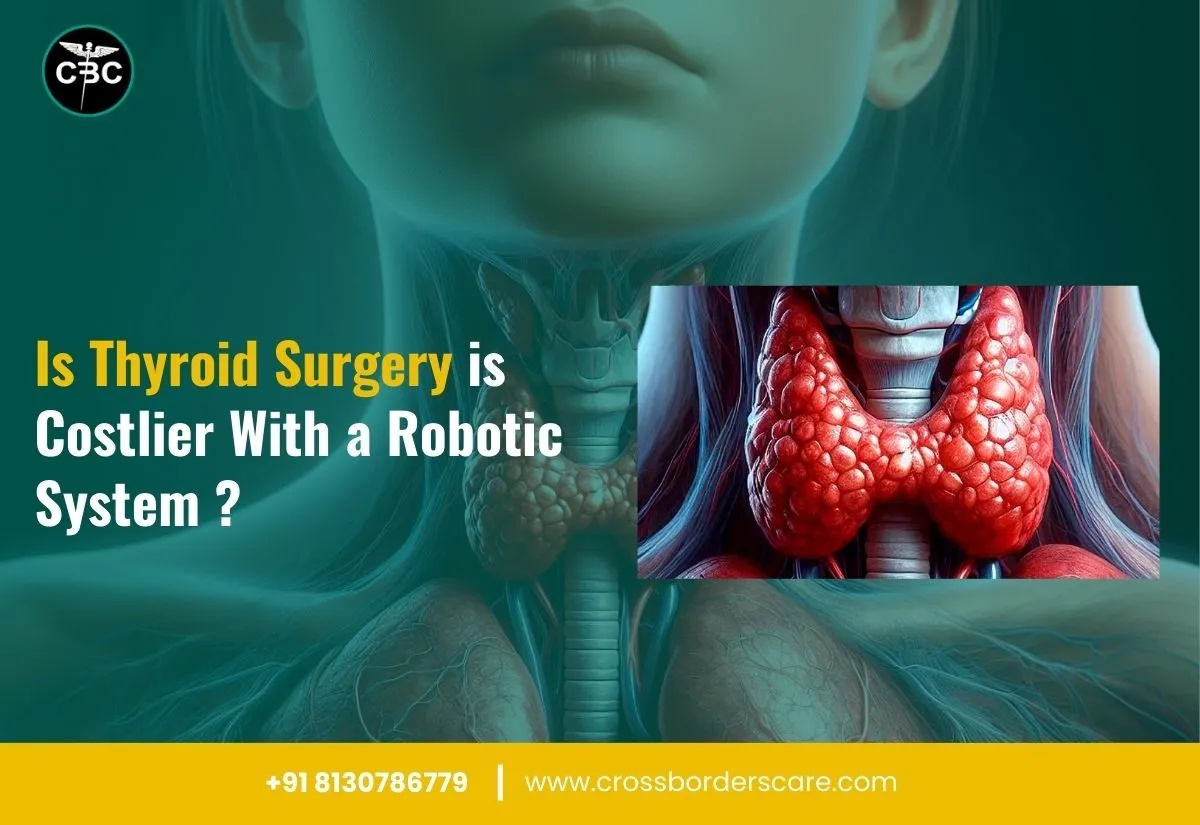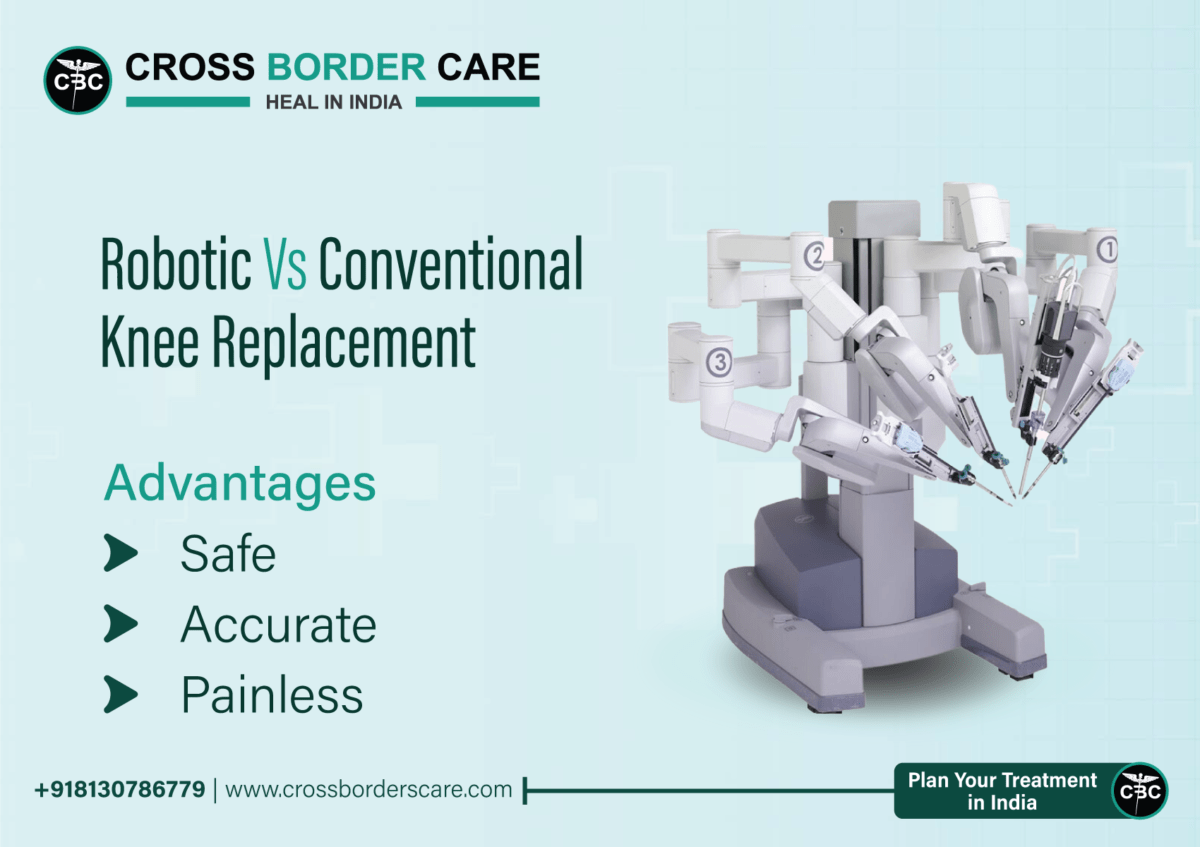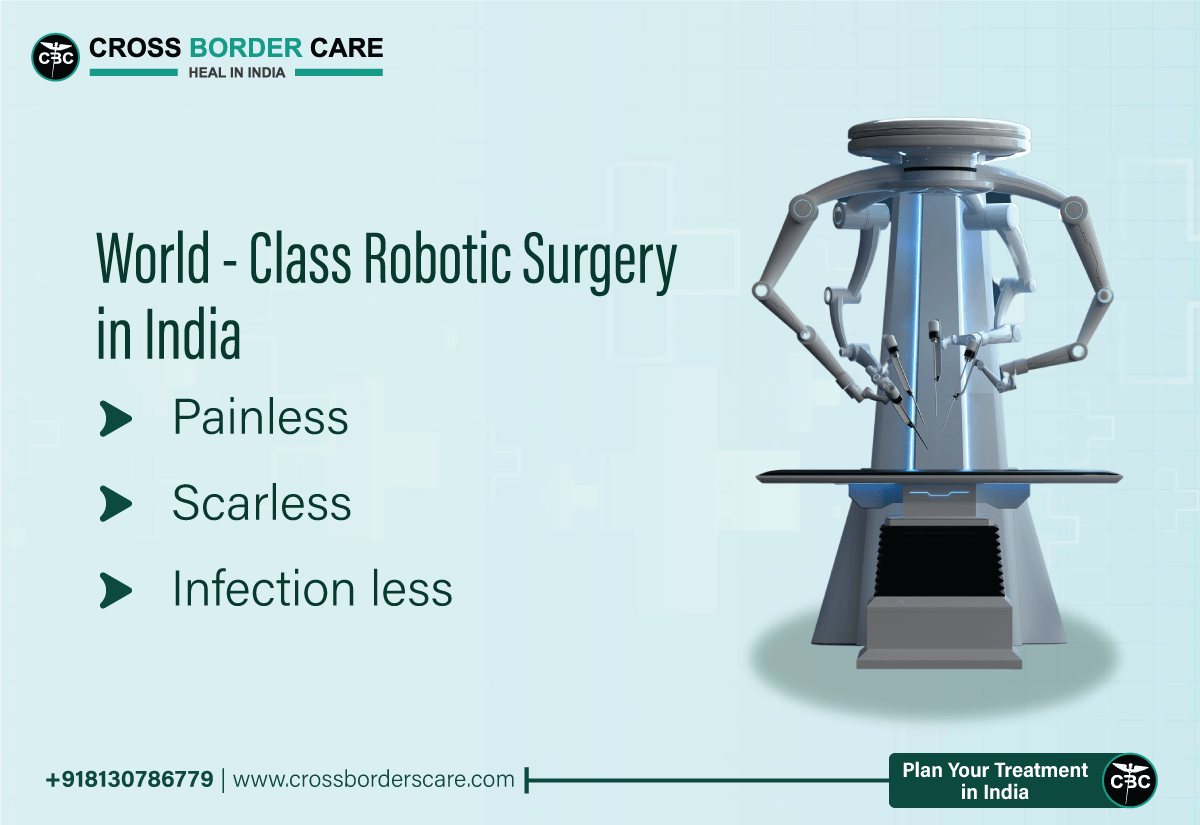Robotic Surgery – An Overview
Robotic surgery is an advanced form of minimally invasive surgery that utilizes computer-controlled robots to perform intricate surgical tasks that may be challenging or less effective for human surgeons. Due to its accuracy and better patient results, this surgical method has grown in popularity in India.
Robotic hands are more flexible and petite than human hands, allowing them to maneuver through the body’s microscopic places. Moreover, robotic surgery’s utilization of mechanical components results in smoother and more regulated motions, reducing tissue stress while being performed. Technology development has completely changed the medical industry with 15 advanced surgical robotic systems including Da Vinci X, Da Vinci Xi, Next Gen Versius, ExcelsiusGPS and CORI surgical system that has been used at the Top hospitals in India.
How Does Robotic Surgery Work?
During an automated surgery session, the surgeon controls the robotic arms holding the surgical instruments from a unique console with hand and foot controls. The robot’s movement scale, which governs how far its arm tip moves for every inch the surgeon’s hand moves, can be changed by the surgeon.
A tiny 3D camera is put into the patient’s body to provide a clear picture of the surgical field. This camera delivers a magnified 360° view of the surgical site to a high-quality monitor. A second surgeon or surgical technician stays near the patient to ensure the surgical tools are correctly positioned and operating.
Robotic surgery has revolutionized the medical industry in India by giving doctors more control and precision during complicated surgical procedures. Both patients and surgeons like it because it offers shorter hospital stays, quicker recovery times, and a lower chance of complications.
Why Is Robotic Surgery Important?
Significant improvements in the field of medicine have led to longer and healthier lives. Yet, it’s crucial to consider all choices, including minimally invasive techniques like robotic surgery, if you or a loved one needs surgery.
With the use of robotics, surgeons can now carry out delicate operations with more accuracy and less trauma, including hernia repair, gallbladder removal, hysterectomy, and prostatectomy. These and other advantages of robotic surgery are available in India.
A high-definition 3D camera and miniature instruments are put into the body during a robotic surgery, while the surgeon operates the instruments from a console close by. The surgical system subsequently executes the procedure by precisely translating the actions of the surgeon.
Robotic surgery has many benefits for the majority of patients, including
● Less pain and bleeding after the procedure,
● Smaller and fewer scars,
● More accuracy in joint replacements,
● Faster recovery times,
● Shorter stays in the hospital,
● A lower risk of infection.
Robotics Surgery For Eye Conditions
Technology development has completely changed the medical industry, particularly in surgery. Robotic eye surgery is a stunning example of how technology has permeated the operating room, making surgery more precise and minimally invasive.
Robotic arms and complex computer algorithms are used in robotic eye surgery to perform difficult procedures like making incisions, removing tissue, and fixing damage. The risk of human error is decreased thanks to this fine degree of control, which also enables surgeons to provide the best patient results.
Faster recovery times, a lower chance of problems, and enhanced vision are just a few advantages of robotic eye surgery. Robotic eye surgery comes in various forms, each intended to treat a particular eye disease. Robotic eye surgery can change how we approach eye surgery, from cataract surgery to vision correction surgery.
Centre for Sight and Eye 7 Hospitals specializes in FEMTOSECOND robotic surgery. Bladeless Femto Laser Surgery is a form of eye surgery where all the surgical steps are the same as those followed in basic eye surgery, except that a computerized laser is used to perform cataract surgery. As no blades and needles are used in the surgery, the Bladeless Femto Laser Surgery is much more precise than standard eye surgery. This surgical procedure is widely used to remove cataracts.
As being a pioneer name in the field of robotic eye surgery Dr. Mahipal S Sachdev has introduced Femtocatarct technology and iLASIK technology for treating cataracts in India. Robotic cataract eye surgery has various advantages over traditional cataract eye surgery. Dr Rahil Chaudhary,Senior Consultant, Eye 7 hospital holds Guinness world record holder for contoura vision lasik surgery by carrying 250 procedures in a single day.
Major robotic specialities
- Bladeless and Robotics eye surgery
- Robotic cataract eye surgery
- Smile laser eye surgery
- Contoura vision surgery
Robotics GI Surgery
At GI Robotic Surgery it offers patients the most cutting-edge, minimally invasive surgical methods possible. A team of highly qualified surgeons like Dr. Surender Dabas, Dr. Deep Goel uses the da Vinci Surgical System to carry out surgeries with greater dexterity, control, and precision.
In addition to colorectal surgery, hernia repair, and gallbladder removal. It strives to offer patients the most cutting-edge and successful surgical procedures to minimize discomfort, scars, and recovery time.
GI Robotic Surgery is dedicated to patient care excellence and works to give patients the highest possible degree of comfort, security, and happiness.
The da Vinci Surgical System is the most sophisticated platform for GI surgery currently available, with more than 2500 units installed in 1500 hospitals like Indraprastha Apollo Hospital, Artemis Hospital, Fortis Memorial, Max PPG, Medanta, Manipal hospital, Max-BLK Hospitals worldwide. One of its kind in North India, the hospital’s M6 CyberKnife Robotic System lessens pain and increases surgical precision.
It is a strong, less invasive substitute for laparoscopy and open surgery for the GI system with potential benefits for a variety of conditions. It works by transferring the surgeon’s hand motions into precise, in-body movements of the surgical tools. The surgeon can closely inspect the surgical site thanks to the system’s advanced imaging technology, which provides a 3D view of the area.
The ability to scale down the surgeon’s movements enables even tiny and precise movements. Depending on the patient’s condition and the surgeon’s level of experience, the da Vinci system may be used during GI surgery.
Robotics Gynae Surgery
Since its inception, medicine has advanced significantly, and with current technology, the potential is apparently endless. Robotic gynecology, a minimally invasive surgical treatment carried out with a robot’s assistance, is one such innovation that has completely transformed the medical sector.
Robotic gynecology, often called robot-assisted gynecologic surgery, is a surgical approach that allows gynecologists to carry out intricate treatments with greater control, accuracy, and adaptability than ever before. The surgeon controls a robot from a console in the operating room to carry out the procedure.
Robot assisted hysterectomy and Myomectomy are the two main forms of robotic gynecology operations. The ovaries, fallopian tubes, and other pelvic organs can all be operated on with robot assistance during laparoscopic surgery. On the other hand, the uterus is removed via a robot-assisted hysterectomy.
Given its increasing popularity, it is safe to conclude that Robotic Gynae is here to stay and will continue to provide a better and more efficient way of doing gynecologic surgery.
Robotic gynecological surgery uses minimally-invasive techniques to carry out gynecological procedures quickly, accurately, and precisely. BL Kapur Hospital, Apollo Hospital, Artemis Hospital, Fortis Memorial Research Institute, Manipal Hospital, Max Super Speciality Hospital, Saket, in India offers this cutting-edge surgical method for patients requiring gynecological procedures.
The hospital employs the Da Vinci robotic surgical system, which has an extremely sophisticated robotic hand with several degrees of freedom and enables surgeons to carry out delicate surgeries with more control and dexterity.
Several robotic gynecological procedures may be carried out, such as:
- Hysterectomy using robots
- Automatized myomectomy
- Automated sacrocolpopexy
- Robotic surgery for endometriosis
- Tubal reanastomosis with robots
- Ovarian cystectomy with robots
Robotics Heart Surgery
With the help of robotic arms, a high-definition camera, and other minimally invasive techniques, major cardiac surgeries can be performed with unmatched accuracy and precision thanks to robotic heart surgery. Robotic surgery at Max Saket, Fortis Gurugram, Manipal hospital Dwarika, Apollo hospital, can speed up patient recovery by giving doctors a 3D image of the heart and more dexterity while lowering the risk of complications.
Expert surgeons like Dr Y K Mishra, Dr. Mukesh Goel, and technicians are committed to offering patients the best possible care in Delhi. It provides a variety of operations, such as atrial septal defect repair, mitral valve replacement, and coronary artery bypass grafting.
Robotic Heart Surgery aims to advance the area of cardiac surgery and enhance the lives of the patients treated.
Robotics Surgery For Joint Replacement
The development of robotic joint replacement in orthopedics is creative and interesting. The joint implant is placed in this surgical process, and cuts are made with extreme precision utilizing a robotic arm. With many advantages over conventional techniques, this cutting-edge technology has completely changed how joint replacement surgeries are carried out.
With a computer application, a doctor can generate a 3D model of a patient’s body and make a 3D image of the patient’s body. The robotic arm uses this model to direct the surgeons like Dr Bhatacharjee, Dr Hemant Sharma, Dr Anil Arora, Dr Ashwani Mianchand, Dr Ashish Chaudhary, Dr Shubash Jangit in real time, enabling more accurate incisions and implant placement. A perfect fit and alignment of the joint implant can be achieved during surgery because of the robotic arm’s ability to make changes and repairs.
Robotic joint replacement techniques come in various forms, including hip and knee replacements. The Hospitals like Max Healthacre, Fortis Memorial Research Institute, Medanta the Medicity,Indraprastha Apollo hospital, Artemis hospital, Aakash Hospital , CK Birla Punjabi Bagh , Sarvodya hospital, W Partiksha has used this advanced technology to enhance the surgical results, lessen problems, and speed up patient recovery. Robotic joint replacement (Robotic Knee and Hip Replacement) presents a promising future for joint replacement surgery with its precision and accuracy.
Robotics Spine Surgery
Modern robotic technology is used in robotic spine surgery to carry out spine surgery with unmatched precision and accuracy. A highly trained surgeon controls the surgical robot used in this kind of surgery via a console. The robot is used in robotic surgery.
A preoperative CT scan or MRI helps the robot precisely map the patient’s anatomy during robotic spine surgery. The surgeon then uses the enhanced imaging capabilities of the robot to direct the surgical tools to the afflicted region of the spine. As a result, there is less tissue damage, less blood loss, and a shorter recovery period for the patient during the less intrusive and accurate procedure.
Open surgery and minimally invasive surgery are the two primary methods of robotic spine surgery. Open surgery requires a larger incision and standard surgical tools, whereas minimally invasive robotic spine surgery employs smaller incisions and specialized instruments to access the damaged portion of the spine.
The most sophisticated minimally invasive robotics procedure for spinal, orthopedic, and neurological conditions, Mazor X Stealth Edition, CORI surgical system, Next Gen Versius, Da Vinci X, and Da Vinci Xi. making it the first healthcare facility in India to do so.
Robotic spine surgery at Indian Spinal Injuries Centre, Max Super Speciality Hospital, Saket, BLK Max Super specialty, uses small incisions. It minimizes the impact on the surrounding area in contrast to traditional open spine surgery. That uses a large incision and causes significant disruption to nearby tissues. Compared to traditional open spine surgery, robotic spine surgery has less pain, a quicker recovery, and a lower risk of complications.
Surgeons can carry out difficult operations with more ease and control. Patients experience a quicker recovery period and improved surgical outcomes.
These surgeries are performed by an expert team of doctors led by Dr. H.S. Chhabra, Dr. Harshavardhan Hedge, Dr. Puneet Girdhar, who are world-renowned for their surgical expertise.
Robotics Surgery For Thoracic Conditions
Thoracic surgery is performed using robotic technology in a sophisticated surgical approach called robotic thoracic surgery. Lung cancer, esophageal cancer, and heart disease are illnesses that might affect the organs in the chest and are treated with this kind of surgery.
A surgeon directs a robotic system containing tiny instruments coupled to robotic arms while operating. The surgeons like Dr. Arvind Kumar, Dr. Pramoj Jindal, has great precision and accuracy thanks to the robotic arms placed into small incisions in the patient’s chest.
Max Healthcare, Medanta the Medicity, Artemis hospital are well renowned for their Robotic thoracoscopic surgery (RTS). Robotic thoracoscopic surgery (RTS) and robotic-assisted thoracic surgery (RATS) are the two primary varieties of robotic thoracoscopic surgery (RTS). When doing minimally invasive surgery, RATS uses a robotic system, whereas RTS uses a robotic system to make small incisions in the chest.
Faster recovery times, less discomfort, and lesser scars are just a few advantages of robotic thoracic surgery. It is a new surgical method that is revolutionizing thoracic surgery since it is both inventive and successful.
Robotics Thyroidectomy Surgery
Modern surgical methods like robotic thyroidectomy surgery have completely changed how thyroid diseases are treated. Advanced robotic technology is used in this minimally invasive treatment to remove the thyroid gland, which leads to reduced scarring, little discomfort, and a quicker recovery.
A tiny camera and robotic arms with surgical instruments are inserted into the neck through tiny incisions made by the surgeon during the surgery. The thyroid gland is subsequently removed using these devices, which offer highly accurate and exact control. The robotic arms allow for a broader range of motion than the human hand, and the surgeon may view the surgical field in high-definition, three-dimensional images.
Transaxillary and retro auricular robotic thyroidectomy procedures are the two basic subtypes. Incisions are done in the armpit for transaxillary thyroidectomies and behind the ear for retro auricular thyroidectomies. There is less scarring and less postoperative pain with both techniques.
Robotics Urology Surgery
Advanced robotic technology is used in minimally invasive robotic urology surgery to carry out surgeries on the urinary system. Shorter hospital stays, quicker recoveries, and a lower chance of complications are just a few advantages that patients can enjoy thanks to this extremely accurate and efficient surgical procedure like Prostatectomy (the extraction of the prostate), Partial and Radical Nephrectomy (the removal of a portion or the entirety of the kidney), and Pyelo/Ureteroplasty (the removal and reconstruction of a segment of the urinary tract).
A surgeon controls robotic arms that are outfitted with surgical instruments during the procedure via a computer interface. The robotic arms are put into the patient’s body through tiny incisions, and the surgeon like Dr. Rajesh Kumar Ahlawat, Dr. Anant Kumar, Dr. Sanjay Gogoi, Dr. Pradeep Bansal, Dr. Narmada Prasad Gupta, Dr. Gagan Gautam, Dr. Anshuman Agarwal, controls them from a distance while viewing the surgery site through a high-definition camera.
Indraprastha Apollo Hospital, Artemis Hospital, Fortis Memorial Research Institute , Max Healthcare, Medanta the Medicity, Manipal hospital, Max- BLK Hospitals uses Robotic urology procedures that come in various forms, such as robotic pyeloplasty, robotic cystectomy, and robotic-assisted prostatectomy. Each treatment focuses on a different urinary system region and has special advantages for patients.
Robotics Weight Loss Surgery
Robotic weight loss surgery uses a robot to perform weight loss procedures, making it a minimally invasive surgical technique. A surgeon like Dr. Arun Prasad, Dr. N.C.Peters, Dr. Vivek Bindal, Dr. Adarsh Chaudhary, Dr PradeepChowbey operates the robotic arms from a console while using a small camera and surgical instruments that are attached to them. This method enables more control and precision throughout the procedure, resulting in less discomfort and scarring, a quicker recovery, and fewer issues.
The three primary forms of robotic weight loss surgery are the Roux-en-Y gastric bypass, the sleeve gastrectomy, and the adjustable gastric band. A small pouch is made at the top of the stomach after a Roux-en-Y gastric bypass, and the small intestine is then directed to this pouch. A big section of the stomach is removed during a sleeve gastrectomy to make room for a smaller stomach, and an adjustable gastric band is wrapped around the stomach to form a smaller pouch. At Manipal hospital, BLK Hospital, Apollo Hospital, Max Hospital, Medanta, RG Stone, Fortis Memorial this Robotic surgery is performed by a well-trained and highly educated medical professional by using some of the most advanced Robotic facilities available in India.
For those who are obese and have tried alternative weight loss techniques without success, robotic weight loss surgery is a viable choice. Its many advantages have gained popularity as a weight loss surgical option. Robotic bariatric surgery is a cutting-edge method that offers a reliable solution for individuals seeking to achieve lasting weight loss. This approach is both safe and efficient, allowing medical professionals to conduct various weight loss procedures such as gastric bypass and sleeve gastrectomy.
The Robotic system enables the surgeon to sit at a console in close proximity to the patient during surgery and manipulate small instruments with great control. Moreover, the system includes an optic camera that offers high-definition 3D visuals for doctors to observe. Overall, this technology enhances surgical accuracy and precision by providing a magnified, three-dimensional view of the operating field.













